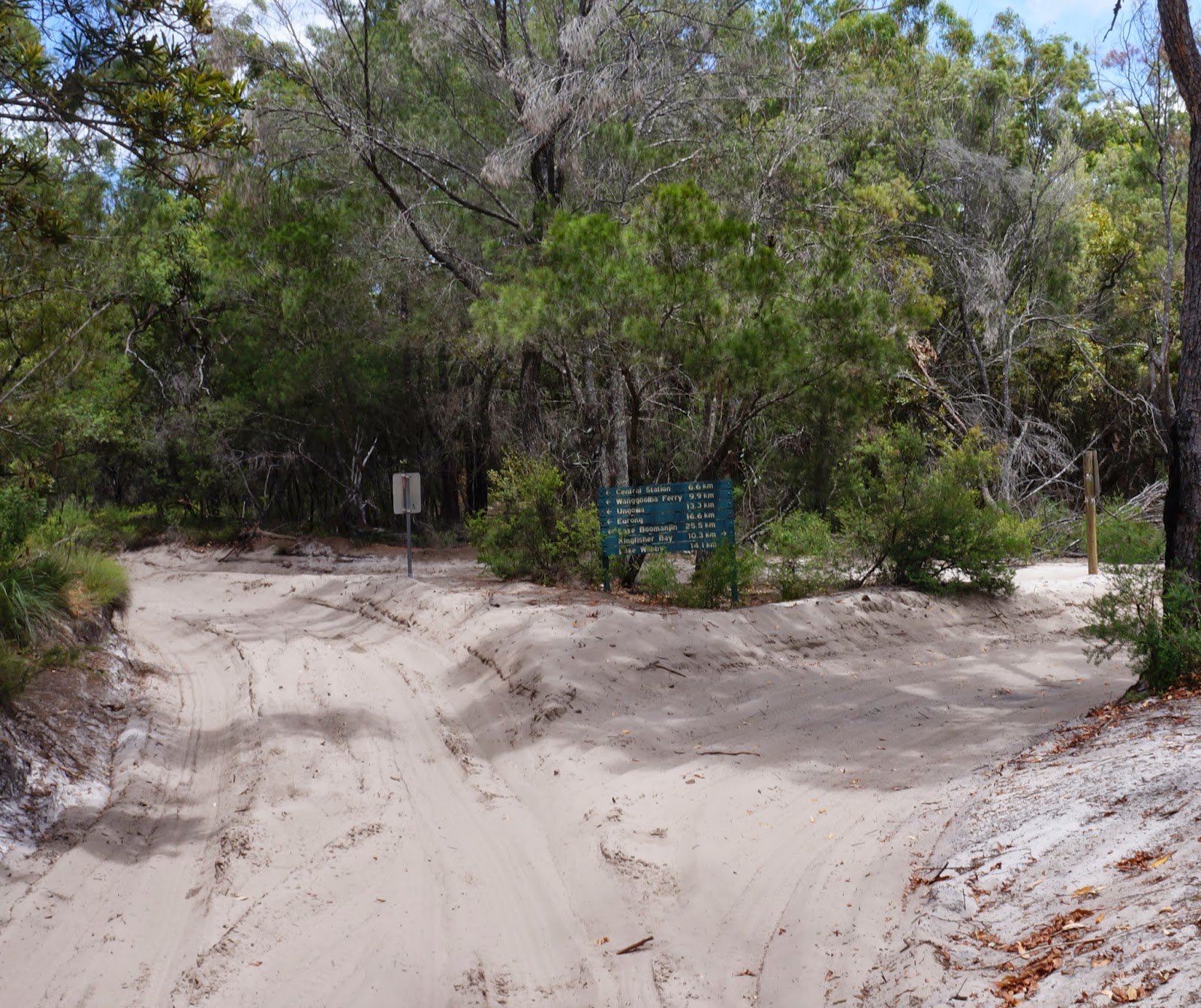Cyclone Marcia was the reason that we had to cut our family trip up the Queensland
coast short. Unfortunately our visit to Agnes Water, 1770 and eventually LadyMusgrave Island at the southern end of the Great Barrier Reef will have to wait
for another time. But we managed to complete our first visit to Fraser Island.
The island’s native name is K'gari and it is a unique place listed as a UNESCO world heritage site that holds a significant environmental and cultural value. It is the world’s largest sand island, made up
of sand that Pacific Ocean currents carried from the rivers of Northern New
South Wales and Southern Queensland.
It is an
extremely beautiful place with a fairly unique and fascinating transport
system. You can get to Fraser Island either by a small ferry or by a small
plane. We chose to take the ferry from River Heads near Hervey Bay to Wanggoolba
Creek named Fraser Venture. The other options to arrive to Fraser Island were
to take a different ferry from River Heads to Kingfisher Bay or a ferry from
Inskip Point near Rainbow Beach to Hook Point at the southernmost point of the
island. All three ferries are very small and can carry only a small number of
cars and trucks.
To drive
around Fraser Island you need a 4WD and not just a 4WD but a fairly high
clearance 4WD with low range capacity and preferably new and wide tyres. You will also need a vehicle permit that can be purchased online or by phone. The road network in the island is all sand and
it is divided in two very different parts: Inland sand tracks and beach. Driving on them requires different vehicle
setup and specifically different tyre pressure and 4wd gear range settings. It
offers a very different driving experience, driving at different speeds and at
a different ride roughness.
Driving off
the ferry at Wanggoolba Creek we followed the sand track towards Central Station. Wanggoolba Creek was a Butchulla woman’s area and birthing place where
men were excluded. While the name usually refers to a train station, Central
Station is an old lodging village and the headquarters of forestry operations
from 1920 until the late 1950s. No matter how wide your 4WD tyres are, you need
to deflate them to around 20 psi (depending on the vehicle and tyre make). You
also need to engage low range before entering the sand tracks. We visited Fraser island outside the school holiday
season so traffic on the tracks was not too heavy and we avoided too many
encounters of opposing traffic on the narrow sections of the tracks. Driving on
sand tracks has a 30km/h speed limit and all other road rules apply. In
practice it is quite difficult to reach even that speed as most of the drive is
quite bumpy due to underground tree routes that give a wave like look along the
track.
Our next
stop after Central Station was Lake McKenzie or as is known by its Aboriginal
name Boorangoora. A sandy beach of almost pure silica gives an exotic –
paradise like look to the place. Next
stop from there was the eastern beach.
When
planning your trip to Fraser Island is good to know the tide times. Driving on
the beach is only safe two hours each side of the low tide. Driving two hours
each side of the high tide is extremely dangerous and lots of cars have been
taken by the Pacific Ocean. Arriving at Eurong you should re-inflate your tyres
to the suggested by the manufacturer pressure. Driving on the beach is much
more like driving on asphalt road. The magnificent 75 mile beach is one of the
island’s main attractions. The speed limit on the beach is 80kms/h but you have
to drive very cautiously and be aware of beach goers, deep washouts from creeks
flowing into the sea and light airplanes landing on that same beach that you
drive.
Of course in such a sensitive environment there are always concerns on whether the transport system of driving around in 4WD cars and buses is the most sustainable and eco-friendly solution. In the same time driving on the beach and on sand tracks has not been free of crashes. Turning the sand tracks into regular roads is next to impossible due to the distraction such a measure will bring to ecosystems and habitats. Even upgrading the existing tracks will attract more vehicle traffic, resulting in a spiral of more road degradation and more expensive maintenance. Ideas about alternative transport systems like a light rail system, have been tabled in the past but were never investigated in depth.






No comments:
Post a Comment